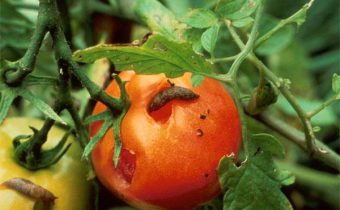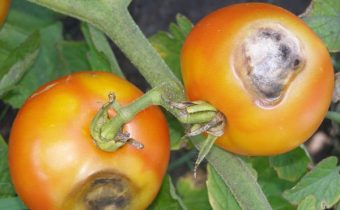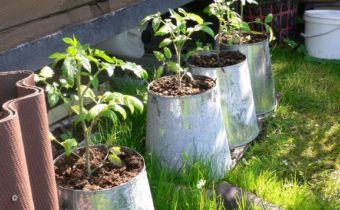Technology of growing tomatoes in buckets
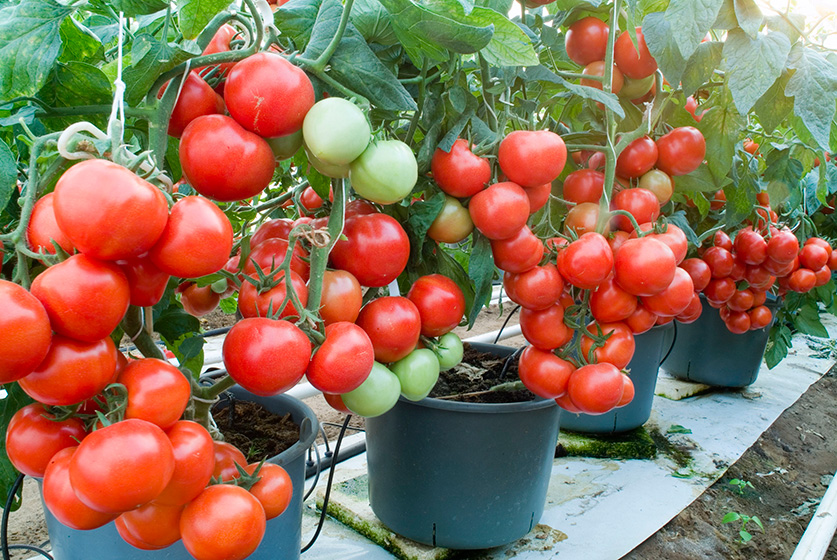
Growing tomatoes in buckets is not only interesting, but also beneficial, it is easy to rearrange such mobile containers, caring for tomatoes is simplified, and the crop is increased by 15-20 percent. Gardeners who have tried this method speak only positively about it, but we will not hide the fact that there are some drawbacks here too.
If you compare them with the benefits of such planting, the advantages, of course, benefit.
Growing seedlings in buckets: advantages and disadvantages
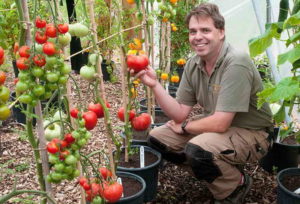
The owners of summer cottages and country houses, enthusiastic about gardening, try to plant as many varied vegetables as possible on their beds. Putting a lot of crops on small plots of land is quite difficult, so landowners are looking for ways to combine the lack of beds and getting a big harvest. One of these methods is planting tomato seedlings in buckets, which has several advantages:
- Watering and fertilizer. All moisture with micronutrients will flow directly to the root system of the bush, water and fertilizers will not be wasted, soaking into the land adjacent to the bush.
- Weed removal and loosening. This process is greatly facilitated by the small area of soil around the seedling.
- Mobility. Buckets or pots with tomato bushes move easily, they can be moved to a more convenient place in a matter of minutes. Remove in the shade of the sun, or put under the roof with heavy rainfall.
- Warming the soil. In the cool summer, the land in the buckets heats up faster and retains heat for a long time, the bushes in the heated soil develop better, form more fruit ovaries, fructification lasts longer than for tomatoes planted in open ground.
- Low-growing bushes planted in buckets and pots, at the end of the season can be placed in greenhouses to extend the period of fruiting.
One, albeit a slight drawback, with such a planting is still there - more frequent watering is required, because moisture from a small volume of soil evaporates faster, water is aspirated by the plant itself.
It is recommended to transfer the buckets with tomatoes to a more shady place or to shade them with ancillary means so that the buckets do not overheat, giving off excess heat to the root system of the shrubs.
Suitable varieties
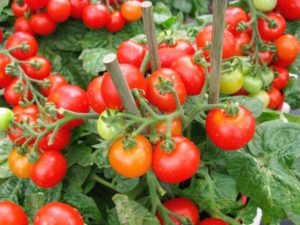
Not all varieties of tomatoes are suitable for growing in buckets and pots, you must immediately eliminate the tall varieties, they need a garter, and therefore their mobility is lost. The bushes will be most suitable compact, low or slightly above average height:
- for greenhouses - (Alaska, Velvet season, Magnus F1) bushes up to 60 cm high, fruit color is bright red, the pulp is dense and juicy, the weight of tomatoes is from 150 to 300 g;
- for open ground - (Skorospelka, Supermodel, Sibiryak, Altaechka, Riddle) the height of seedlings is from 60 to 75 cm, the fruits are crimson or red, the average weight reaches 80-300 g.
Varieties and tomato hybrids It is offered on sale a lot: different color of fruits from yellow to almost black, fruits of different sizes and their shape. Choose the most suitable - the task of the gardener, each of them has their own tastes, we offered several varieties for example.
What is needed for planting
Tomato seedlings for cultivation in pots or buckets are prepared in the usual way or they buy ready-made, then they prepare the container, the substrate and the fertilizers. You can prepare a seat in advance, that is, in the fall. Drainage material is poured to the bottom of the tank with a height of up to 5 cm, filled with prepared substrate with complex fertilizer. For shrinking, water is watered once, left for winter in greenhouses or shallow pits (25-30 cm), and if this happens in early spring, stand 2-3 weeks before planting.
What buckets and pots fit
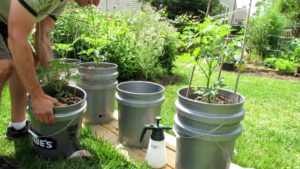
For growing tomatoes suitable capacity of not less than 10 liters, preferably metal, but you can use plastic, although their shelf life is not more than 2-3 years. If the bucket is already full of holes on the bottom or side, it will greatly facilitate the aeration of water and air in the container. In the absence of holes, they will have to do a few pieces (4-5) on the bottom and up to 10 around the circumference of the bucket. But gardeners do not always want to spoil a fairly new bucket, so they use a drainage layer (5 cm) of pebbles or expanded clay.
The color of the bucket or pot is of great importance when growing tomatoes. Black containers heat up faster in the sun, transferring excess heat to the roots of plants, this can damage the root system and the entire bush.
Soil preparation
The important point when growing tomatoes in whole buckets and pots is the preparation of the soil mixture. The technology provides for thorough mixing of the following components:
- sod land - 2 parts;
- humus - 2 parts;
- sand or peat - 1 part.
To the substrate prepared in this way, ash should be added (300 g per bucket of mixture), superphosphate or nitrophos (read the dosage on the package).
Before mixing the components, the ground taken from the garden must be disinfected by calcining or shed by a solution of potassium permanganate.
The principle of planting tomatoes
A week before planting the seedlings, the soil in the buckets is watered so that the earth settles a little. From 1 to 3 tomato bushes are planted in one container, it depends on the variety, the smaller the plant, the more seedlings you can mark in the bottom of a bucket or pot. If the bush is high enough (up to 75 cm), a wire frame is constructed at the edges of the tank to facilitate maintenance.
Plant Care
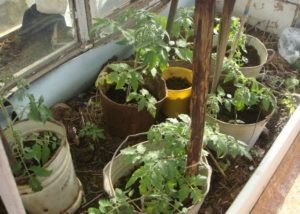
It is easier and less time consuming to care for tomatoes planted in buckets, the basic care processes are the same as for tomatoes on ordinary beds:
- Watering. Carry out every 2-3 days, but you should not pour the soil, watered only under the root or (if buckets are buried in the ground) near the tank.
- Fertilizer and dressing. The main dose of organic and mineral fertilizers is laid before planting seedlings, fertilizing is done 1-2 times per month, increased up to 3 times during the period of active fruiting.
- Weed removal and loosening. The easiest job, as in the buckets almost no weed. It will be harder to loosen the soil when the bush grows significantly. It will be necessary to remove the lower leaves and tie up the decaying branches around the circumference, at least for the time of loosening.
- Removal of stepsons. It is carried out in the same way as during normal landing. They are removed, not allowing them to grow more than 5 cm. For varieties that do not require the removal of stepsons, this work is completely excluded.
- Prevention of diseases and pests is carried out identically to the usual beds, in early spring - after transplanting, before and after flowering.
Light care during hot or rainy days, plants in buckets can be easily moved under a shed or in a greenhouse.
Conclusion
Growing tomatoes in solid buckets or pots helps preserve land for planting other vegetable and fruit crops, flowers, ornamental plants. Nowadays, gardeners are passionate about not only obtaining high yields, they strive to decorate their gardens and gardens in every possible way. Tomatoes ripening in buckets are not only tasty fruits, they serve as a decoration of a garden or vegetable garden with their bright balls.



